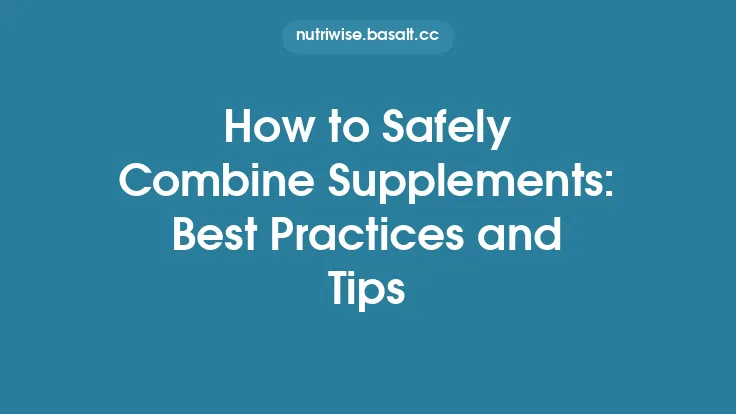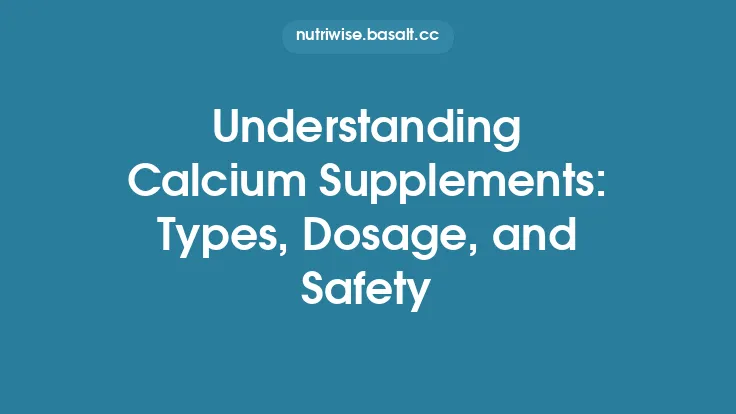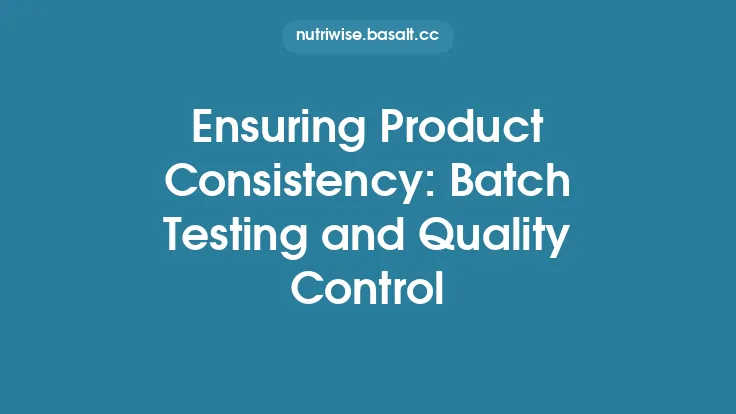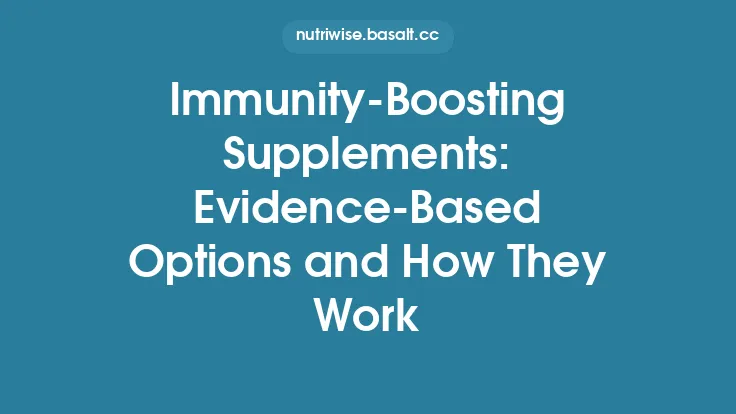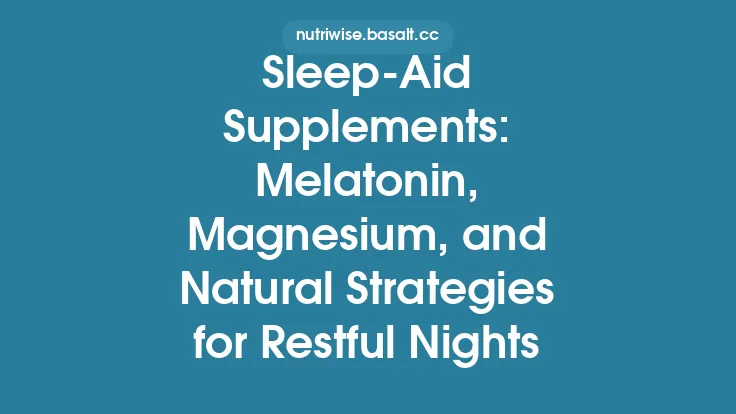The supplement market has exploded in recent years, offering consumers a dizzying array of vitamins, minerals, botanicals, and specialty blends. While this abundance provides choice, it also raises a critical question: how can shoppers be confident that the product they purchase truly contains what the label claims, and that it is free from unwanted substances? The answer often lies in third‑party certification—a process that places an independent, scientifically‑driven assessment between the manufacturer and the consumer. By examining the mechanics, standards, and implications of third‑party certification, we can understand how it serves as a cornerstone for ensuring both purity and potency in dietary supplements.
What Is Third‑Party Certification?
Third‑party certification is an external validation performed by an organization that is independent of both the supplement manufacturer and the retailer. Unlike internal quality checks, which can be subject to bias or conflict of interest, a third‑party auditor applies a predefined set of criteria—often rooted in internationally recognized standards—to evaluate the product’s composition, manufacturing processes, and documentation. Upon successful completion, the certifying body grants a seal or mark that the manufacturer may display on packaging, marketing materials, and online listings.
Key characteristics of a genuine third‑party certification include:
- Independence – The certifier has no financial stake in the product’s sales.
- Transparency – The standards, testing methods, and audit procedures are publicly documented.
- Scientific Rigor – Analyses are performed using validated analytical techniques and accredited laboratories.
- Reproducibility – The certification process can be repeated on subsequent production batches, ensuring ongoing compliance.
Why Certification Matters for Purity and Potency
Purity refers to the absence of unintended substances—such as heavy metals, pesticide residues, or undeclared allergens—while potency denotes the presence of the active ingredients at the levels claimed on the label. Both attributes are essential for efficacy and safety:
- Consumer Trust – A visible certification mark signals that an impartial entity has verified the product, reducing skepticism.
- Clinical Consistency – For individuals using supplements to address specific health concerns, consistent potency ensures that the therapeutic dose remains reliable.
- Risk Mitigation – By confirming the absence of contaminants, certification helps protect vulnerable populations (e.g., pregnant women, athletes) from inadvertent exposure.
Key Players in the Certification Landscape
A variety of organizations specialize in supplement certification, each with its own focus and methodology. While the market includes dozens of entities, a few have achieved broad recognition due to their stringent standards and transparent operations:
| Organization | Primary Focus | Typical Scope of Evaluation |
|---|---|---|
| NSF International | Broad dietary supplement safety | Ingredient identity, contaminant limits, label accuracy |
| ConsumerLab.com | Independent product testing | Potency verification, contaminant screening, comparative analysis |
| Informed‑Sport/Informed‑Choice | Sports nutrition safety | Banned substance testing, ingredient verification |
| BSCG (Banned Substances Control Group) | Athlete‑focused testing | Substance screening, manufacturing oversight |
| Eurofins Scientific | Laboratory‑driven certification | Comprehensive analytical profiling, stability testing |
Each organization publishes its own certification criteria, which may differ in terms of acceptable limits for contaminants, required analytical methods, and frequency of re‑testing.
Core Elements of a Certification Audit
A typical third‑party audit proceeds through several distinct phases, each designed to scrutinize a different facet of product integrity:
- Document Review
- Formulation Records: Detailed ingredient lists, source documentation, and batch formulas.
- Supply‑Chain Traceability: Certificates of analysis (CoA) from raw material suppliers, shipping logs, and storage conditions.
- Quality Management System (QMS): Policies governing change control, deviation handling, and corrective actions.
- On‑Site Inspection
- Facility Assessment: Evaluation of production areas, sanitation practices, and equipment calibration.
- Personnel Interviews: Confirmation that staff understand and follow documented procedures.
- Sample Collection & Laboratory Analysis
- Random Sampling: Representative units are taken from production lots, often using statistically based sampling plans.
- Analytical Testing: Methods such as high‑performance liquid chromatography (HPLC), gas chromatography‑mass spectrometry (GC‑MS), inductively coupled plasma mass spectrometry (ICP‑MS), and nuclear magnetic resonance (NMR) are employed to quantify active ingredients and detect impurities.
- Report Generation & Decision
- Findings Summary: The auditor compiles results, noting any deviations from the certification criteria.
- Certification Outcome: If all parameters meet or exceed the required thresholds, the product receives the certification seal; otherwise, corrective actions are mandated before re‑evaluation.
Analytical Methods Used to Verify Purity
Ensuring that a supplement is free from unwanted substances hinges on the selection of appropriate analytical techniques. The most common methods include:
- ICP‑MS (Inductively Coupled Plasma Mass Spectrometry) – Detects trace metals (e.g., lead, arsenic, cadmium) at parts‑per‑billion levels.
- GC‑MS (Gas Chromatography‑Mass Spectrometry) – Identifies volatile organic compounds, pesticide residues, and residual solvents.
- LC‑MS/MS (Liquid Chromatography‑Tandem Mass Spectrometry) – Provides high‑sensitivity detection of non‑volatile contaminants, such as mycotoxins and synthetic adulterants.
- ELISA (Enzyme‑Linked Immunosorbent Assay) – Used for rapid screening of allergens and specific protein contaminants.
These methods are typically performed in ISO/IEC 17025‑accredited laboratories, ensuring that the data meet internationally accepted quality standards.
Assessing Potency: Standardization and Bioavailability
Potency verification goes beyond simply confirming the presence of an ingredient; it requires quantifying the exact amount and, where relevant, its bioavailable form. Key considerations include:
- Standardized Extracts – Botanical supplements often use extracts standardized to a specific marker compound (e.g., 5% hypericin in St. John’s wort). Certification labs measure the marker to confirm that the extract meets the claimed standardization level.
- Assay of Active Ingredients – For vitamins and minerals, assays determine the actual concentration (e.g., mg of vitamin C per tablet).
- Dissolution Testing – Simulates gastrointestinal conditions to assess how readily the active ingredient becomes available for absorption. While not a full pharmacokinetic study, dissolution profiles provide a proxy for bioavailability.
- Stability Evaluation – Products are tested at various time points under controlled temperature and humidity to ensure that potency remains within acceptable limits throughout the shelf life.
Comparing Certification Schemes: What Sets Them Apart?
Not all certifications are created equal. When evaluating a seal, consider the following differentiators:
| Differentiator | Example Impact |
|---|---|
| Scope of Testing | Some programs test only for heavy metals, while others include a full panel of pesticides, mycotoxins, and synthetic adulterants. |
| Frequency of Re‑Testing | Annual re‑testing provides higher assurance than a one‑time audit. |
| Transparency of Criteria | Organizations that publish detailed testing limits and methods enable consumers to assess rigor. |
| Accreditation | Certifications backed by ISO/IEC 17025‑accredited labs carry additional credibility. |
| Specialized Focus | Sports‑nutrition certifications prioritize banned‑substance screening, whereas general health certifications may emphasize allergen control. |
Understanding these nuances helps consumers and retailers select products that align with their specific safety and efficacy expectations.
How Consumers Can Verify a Certification Claim
Even with a certification seal on the label, it is prudent for shoppers to confirm its authenticity:
- Visit the Certifier’s Website – Most organizations maintain searchable databases where users can enter a product name, batch number, or QR code to view the certification status.
- Check the Seal’s Design – Authentic seals often include a unique identifier, holographic element, or serial number that is difficult to counterfeit.
- Look for Date Stamps – Certifications are typically valid for a defined period; an outdated seal may indicate that the product has not been re‑tested.
- Cross‑Reference with Independent Reviews – Consumer‑focused testing services sometimes publish comparative reports that include certification outcomes.
By taking these steps, shoppers can move beyond visual trust and engage in informed verification.
Benefits for Manufacturers and Brands
From a business perspective, third‑party certification offers several strategic advantages:
- Market Differentiation – A credible seal can set a product apart in a crowded marketplace, appealing to health‑conscious consumers.
- Retailer Acceptance – Many large retailers and e‑commerce platforms require certification as a condition for shelf space or online listing.
- Risk Reduction – Independent testing can uncover formulation or sourcing issues before they reach the consumer, averting costly recalls.
- Brand Reputation – Demonstrating a commitment to transparency and quality builds long‑term consumer loyalty.
- International Trade Facilitation – Certifications that align with global standards (e.g., ISO, Codex) simplify export processes and regulatory acceptance in foreign markets.
Challenges and Limitations of Third‑Party Certification
While certification is a powerful tool, it is not without constraints:
- Cost – Comprehensive testing and audit fees can be prohibitive for small‑scale manufacturers, potentially limiting access to certification.
- Scope Boundaries – Certifications assess products at the time of testing; they do not guarantee that future batches will be identical unless re‑testing is mandated.
- Variability in Standards – The lack of a universal certification framework means that the rigor of one program may differ significantly from another.
- Potential for Misuse – Some companies may display outdated or unverified seals, misleading consumers.
- Focus on Chemical Purity Over Clinical Efficacy – Certification confirms that a product contains what it says, but it does not assess whether the ingredient delivers the claimed health benefit.
Recognizing these limitations helps stakeholders use certification as part of a broader quality assurance strategy rather than a sole guarantee.
Future Directions and Emerging Trends
The landscape of third‑party certification is evolving in response to technological advances and consumer expectations:
- Blockchain‑Enabled Traceability – Integrating blockchain can provide immutable records of raw‑material sourcing, manufacturing steps, and testing results, enhancing transparency.
- Rapid On‑Site Testing – Portable spectroscopic devices (e.g., near‑infrared, Raman) are being piloted for real‑time verification of ingredient identity and concentration, potentially reducing reliance on off‑site labs.
- Holistic Quality Labels – Emerging certification schemes aim to combine purity/potency verification with sustainability metrics, such as environmentally responsible sourcing and carbon footprint.
- AI‑Driven Data Analytics – Machine‑learning algorithms can analyze large datasets of test results to identify patterns of non‑compliance, prompting proactive corrective actions.
- Global Harmonization Efforts – Industry groups are working toward unified standards that would allow a single certification to be recognized across multiple regulatory jurisdictions, simplifying international trade.
These innovations promise to make third‑party certification more accessible, reliable, and comprehensive, reinforcing its role as a cornerstone of supplement safety.
In summary, third‑party certification serves as an essential bridge between manufacturers’ quality intentions and consumers’ demand for trustworthy products. By subjecting supplements to independent, scientifically rigorous evaluation, certification verifies that the ingredients are both pure and present at the potency claimed on the label. While it is not a panacea, when combined with robust internal quality systems and informed consumer behavior, third‑party certification markedly elevates the overall integrity of the dietary supplement marketplace.
